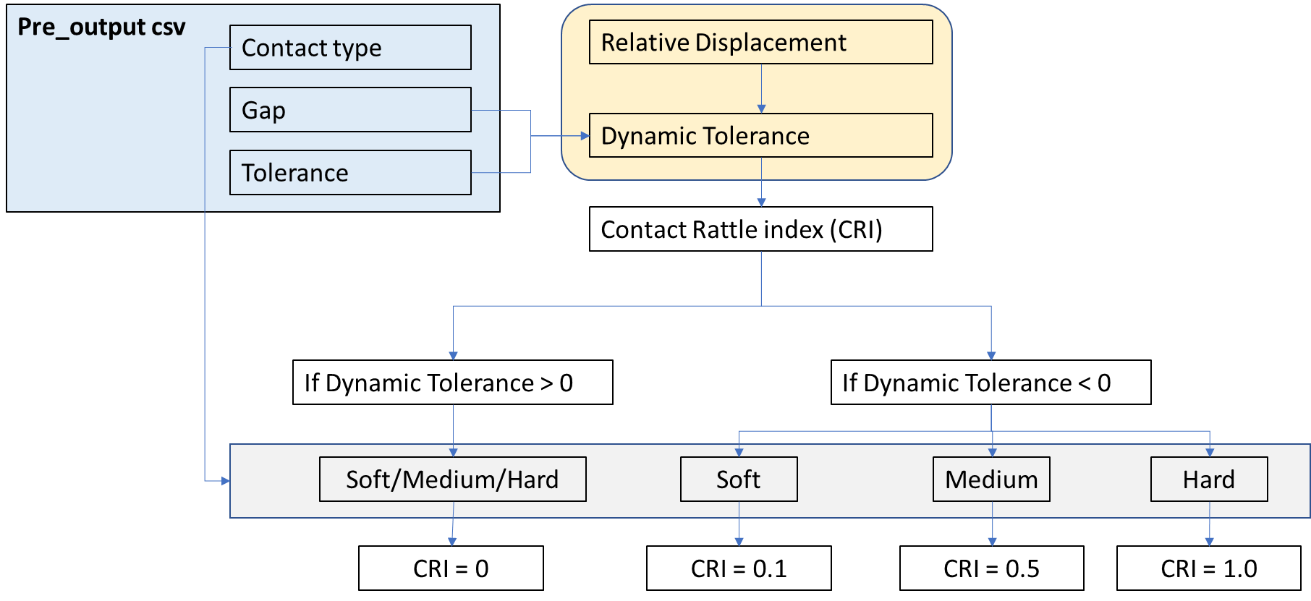Rattle Evaluation
The rattle evaluation is based on the assessment of relative displacement between two parts along the defined E-Line. The relative displacement is compared to the Gap and Tolerance values defined during the pre-processing workflow
- Relative displacement magnitude and in local Z-direction
- Dynamic Tolerance is defined as:
Gap [mm] - Tolerance [mm] - Relative Dsiplacement in Z
In addition, SnRD proposes an unit-less Contact Rattle Index (CRI) coupled to the material pair along the Rattle E-Line. Named as Contact Type, this criterion is based on the material stiffness values:
Contact Types
- Soft- materials such as foam, leather and rubber- default Youngs(E) Modulus < 500 MPa
- Medium- soft plastics material- 501 MPa < E-modulus < 10000 MPa
- Hard- hard plastics, metals, glass materials- E-modulus > 10000 MPa
 Figure 1.
Figure 1. Below is the Contact Risk Index matrix:

Figure 2.
Issue and risk areas are then easily identified, guiding the analyst for deeper investigation of root cause and problem solving